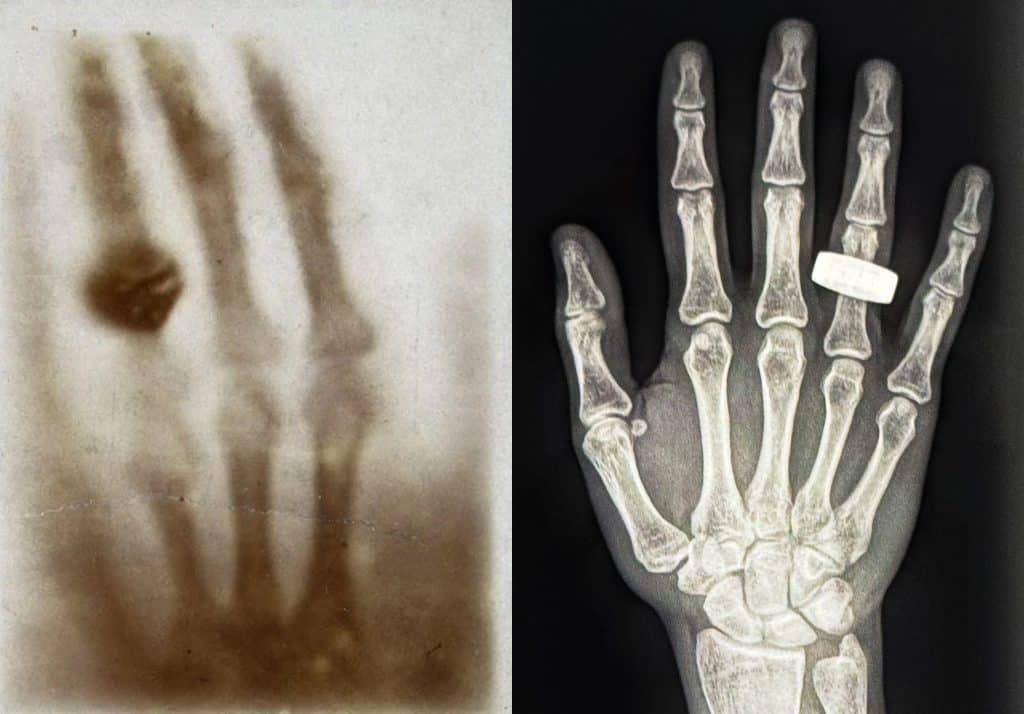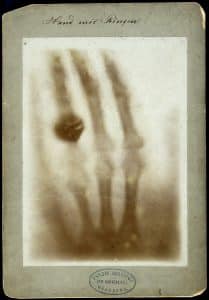
Introduction
What’s the connection between the first X-ray ever taken on Earth and the latest X-ray captured in space? Over 100 years after Wilhelm Roentgen’s groundbreaking discovery, the first-ever X-ray in space mirrors that historic moment: an astronaut’s hand with a ring. This remarkable coincidence is more than just symbolic—it represents a major milestone in space medicine and technological advancement.
The ride to orbit was much smoother than I had anticipated. Apart from the final minute before SECO, I barely felt any G-forces—it honestly felt like just another flight.
I had imagined it would feel like being in an elevator that suddenly drops, but that sensation never came.… pic.twitter.com/h7YMyPY9ld
— Chun (@satofishi) April 2, 2025
The First X-ray: A Pivotal Moment in History

In 1895, Wilhelm Roentgen accidentally discovered X-rays and took the first-ever X-ray image: his wife’s hand adorned with a ring. This image, simple yet revolutionary, marked the beginning of modern medical imaging. The ring added an unintentional but poignant symbol of human connection, permanence, and technological progress.
The First X-ray in Space: A Mirror Image

Fast forward to today, and history repeats itself—this time beyond Earth. The first X-ray taken in space features an astronaut’s hand with a ring, a deliberate nod to Roentgen’s discovery. This decision highlights the continuous thread of scientific progress and the deeply personal aspect of exploration. Whether intentional or not, the image serves as a powerful reminder that humanity remains at the heart of every scientific breakthrough.
Fram2: enabling the first X-ray in space
The image was taken during the Fram2 mission, the first polar-orbit human spaceflight mission designed to explore the polar regions of Earth in an entirely new way. It is named after the Fram ship, which was built in the 1800s and helped explorers first reach the Earth’s polar regions. Fram is Norwegian for “Forward” and was the name of the legendary ship designed to function in the icy polar waters used by some of the first crews to explore the Arctic in the late 1800s. The Fram2 crew consists of Mission Commander Chun Wang, Vehicle Commander Jannicke Mikkelsen, Mission Pilot Rabea Rogge, and Mission Specialist and Medical Officer Eric Philips. Each crewmember has significant experience exploring and capturing the polar regions and brings a unique expertise and perspective to support Fram2.
Fram2 has two main goals: to be the first crew to view and capture the Earth’s polar regions from low-Earth orbit and conduct research to help advance humanity’s capabilities for long-range space exploration.
SpaceXray Project: Advancing Medical Capabilities in Space
The SpaceXray project is a pioneering research initiative focused on capturing the first medical X-ray in space. As part of the Fram2 mission, this groundbreaking effort aims to validate the feasibility of acquiring high-quality diagnostic radiographs in microgravity, a crucial step toward ensuring astronaut health on deep-space missions.
By collaborating with top academic institutions, private companies, and technology innovators across North America, SpaceXray is laying the foundation for future space medicine and in-flight equipment diagnostics. These advancements are key to astronaut safety and mission success in long-duration space travel.
This study will evaluate image quality, contrast, and spatial resolution while focusing on bone mineral density measurements—critical for monitoring the effects of microgravity on astronaut bone health. Beyond medical imaging, the project also explores the use of X-rays for non-invasive hardware diagnostics, enabling in-flight troubleshooting of potential system failures.
KA Imaging’s Reveal 35C X-ray Detector
KA Imaging’s Reveal 35C detector was selected for this mission due to its cutting-edge SpectralDR technology. Cleared by both Health Canada and the FDA, the Reveal 35C provides dual-energy subtraction imaging in a single exposure, generating three distinct images: soft tissue, bone, and a traditional digital radiograph.
MinXray’s Portable X-ray System
Chicago-based MinXray is contributing its IMPACT system, a compact, battery-powered X-ray generator designed for use in remote environments, including space. Its rechargeable lithium-ion battery eliminates the need for external power sources, making it an ideal solution for microgravity applications.
Why It Matters: Impact Beyond Symbolism
- Advancing Space Medicine: The X-ray was taken as part of ongoing research into astronaut health. Studying how the human body reacts to long-duration spaceflight is crucial for future missions to space.
- A New Era of Space-Based Medical Research: This first spaceborne X-ray represents just the beginning of real-time medical diagnostics in orbit, paving the way for improved healthcare for astronauts on deep-space missions.
- Transforming care on Earth: There is a strong parallel between the space use case and remote/resource-scarce regions. While it’s exciting that SpectralDR is heading to space, it’s a reminder of the critical need for better imaging solutions here on Earth, where millions still lack access to essential healthcare. The same innovation that supports astronauts can transform medical care in remote and resource-limited regions.
Conclusion: Connecting Past, Present, and Future
The first X-ray in space is more than a scientific milestone; it’s a bridge between the past and the future. From Roentgen’s lab to the vastness of space, the image of a hand with a ring reminds us that science, at its heart, is a profoundly human endeavor. It’s up to us to keep pushing the boundaries of knowledge and using these advancements to transform medical imaging on Earth and beyond.
